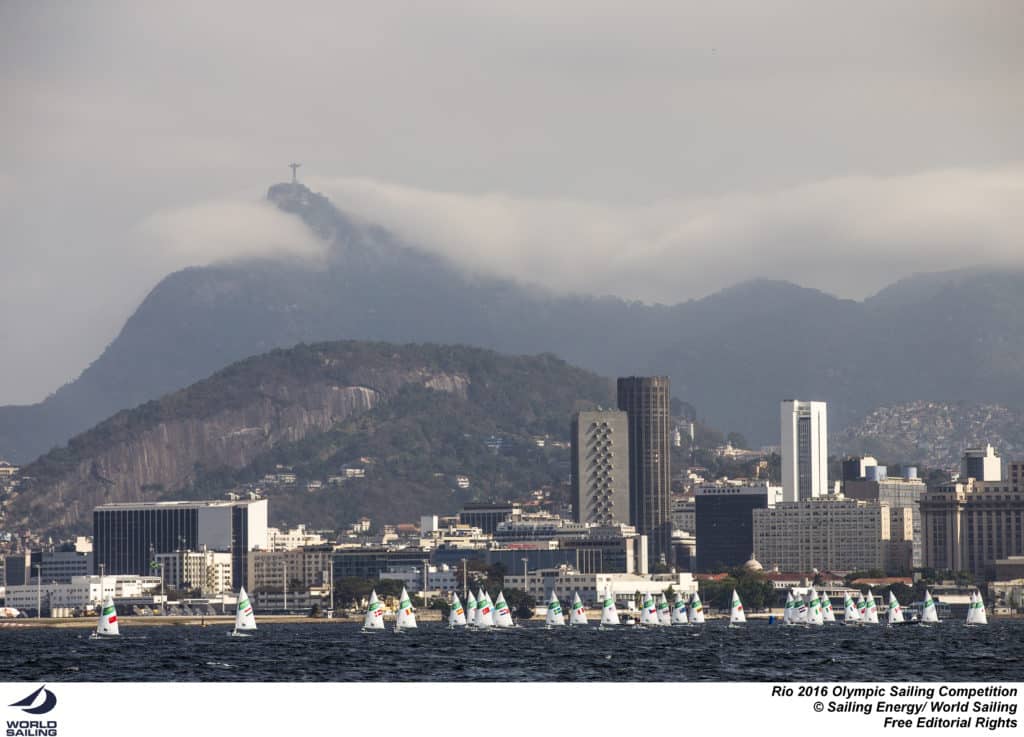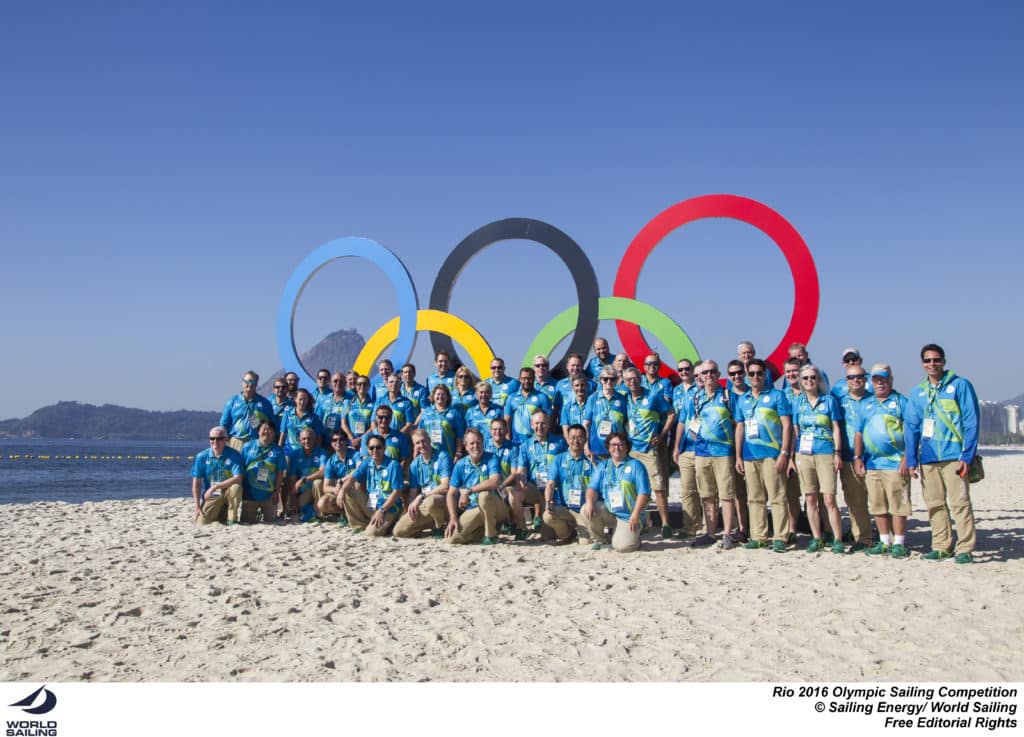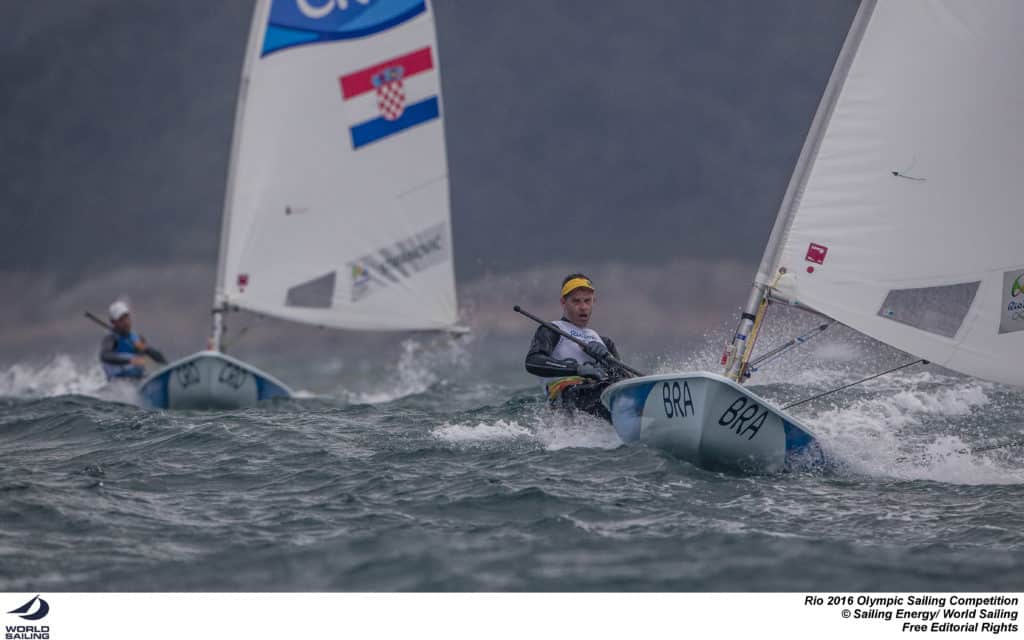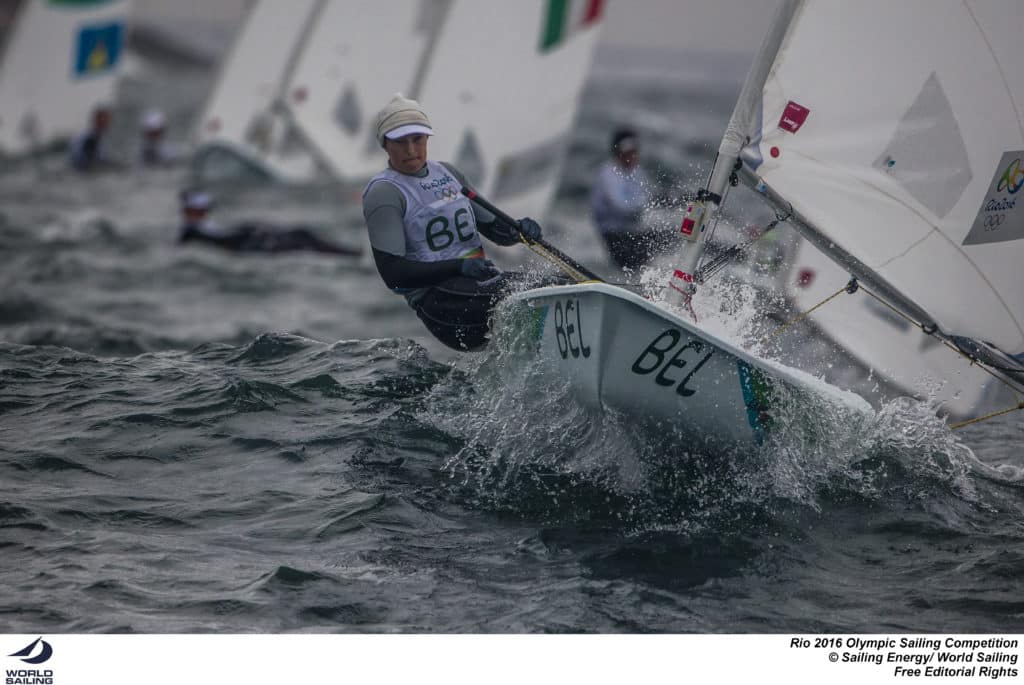
The Rio 2016 Olympic Sailing Competition
The Olympic regatta is the pinnacle of sailing in the ten classes that compete here, but it’s also the pinnacle of race officiating. The task of keeping the Olympic regatta running smoothly and fairly falls mostly to Principal Race Officer Nino Shmueli and his six race committees.
The venue in Rio has seven possible race circles on which competition can be scheduled. Only six can be in use at once due to the race committees, but with reserve days built into the schedule this has yet to be a conflict.
A schedule of racing, including courses, was published in January. Over the first week of regatta, this schedule basically went out the window as weather variables forced Shmueli to move classes that were scheduled to be inside to the outside courses, and vice versa. “The changes we make to the course assignments are to provide fair and good sailing,” says Shmueli. “When you are taking in considerations like class wind limits and course structure, and mix it with weather reports, we often have to change the course areas from the original schedule.”
Shmueli follows a few basic guidelines, but otherwise the course assignments are up to his and his team’s discretion to alter. The goal is to have every class sail once on the Pao de Acucar course before the medal race round in order to get both practice and TV screen time, and sail one day on one of the courses outside the bay, to provide variation

The Rio 2016 Olympic Sailing Competition
After racing each day, the race officers hold a meeting to which Shmueli brings his proposed course assignments for the next day. Besides weather, they take into account the media (broadcast is only from the Pao or Escola Naval courses), the class wind limits, rules and race structure (trapezoid versus windward-leeward).
Rio’s weather can be unpredictable, which is what makes it such a challenging venue. Those who medal here will be the best all-around sailors in every variable situation. “The sailor usually arrives in the morning and knows that he may not sail on the course that was published on the schedule. But, sailing is sailing,” says Shmeli. “Sailing outside the bay there are different currents, winds and waves than inside the bay with the current, countercurrents, and wind shadows. It’s another strategy, and they have to be prepared.”
The only unchangeable is the medal race course: all medal races will be sailed on the Pao de Acucar, or Sugarloaf course, right off the spectator area on Flamengo beach and the course that has the best broadcast capabilities. If on a medal race day the wind is unfavorable to sail on that course, Shmueli says the race will be bumped to the next day, either held at a different time so as not to conflict with the class originally scheduled for the next day, or by shifting the entire schedule a day later, depending on what the race committee can accomplish with the conditions.
Fortunately for Shmueli and his team, the assignment adjustments haven’t prevented any racing, and today’s medal races scheduled on the Pao course look as though they’ll go ahead on schedule. The Lasers will be racing at 1300 local, and the Radials at 1400.

The Rio 2016 Olympic Sailing Competition
In the Lasers, Tonci Stipanovic has secured a gold or silver for Croatia, but the color will be determined today by his performance and that of Australia’s Tom Burton, the only sailor in position to take the top spot. Burton is also assured a medal, so we can expect to see some match racing between these two today for the lead. New Zealand’s Sam Meech will look to hold on to his third place position, but will have to defend from Brazil’s Robert Scheidt, France’s Jean Baptiste Bernaz and Great Britain’s Nick Thompson. “I think it’s a race where you have to be more aggressive, because there are a lot of points in the game and there are some guys who have the same points as me, and so the same perspective,” says Scheidt about the medal race. “I think it’s going to be quite an interesting race, because a few guys behind have nothing to lose, while the top two guys are fighting for the gold. It will be interesting.”

The Rio 2016 Olympic Sailing Competition
For the Radials, leader Marit Bouwmeester, from the Netherlands, is assured a medal, but it could be anywhere on the podium. Denmark’s Anne-Marie Rindom is just behind her and could make a final surge. Rindom has stayed steadily atop the fleet since the second day of racing where a DSQ put a bruise on her excellent score sheet. Ireland’s Annalise Murphy is in a similar situation to the last games, where she finished without a medal in fourth. Murphy led through the first four days of the London Games, which is strikingly similar to her top of the pack lead here in Rio, before losing it all in the medal race. Murphy will be looking to right that wrong and secure herself a spot on the podium. She’s laid back in her starts but aggressive on the beats, so watch for spectacular passing from Murphy.
Right behind the Irishwoman is Belgium’s Evi Van Acker, whose illness made headlines this week when the Belgian Olympic Committee blamed the Bay water as the source of an illness which was sapping her energy. Following a rest day where Van Acker was treated for her sickness, she came back strong and climbed back into fourth place and silver or bronze medal contention. The Radials had another rest day yesterday, so she could come back even stronger.
The 470 men and women sail their final day of preliminary racing today. There’s a chance that Croatia’s Sime Fantela and Igor Marenic could secure the gold today, but Australia’s Mat Belcher and Will Ryan could defend enough to keep the medal race open. The women’s fleet has no sure bets, but today will certainly separate the top and bottom halves of who will be the medal race fleet.
Live tracking is available for all races at sailing.org, and the Laser and Radial medal races will be broadcast/streamed live. Check your local provider’s listing and website for information on the stream.









